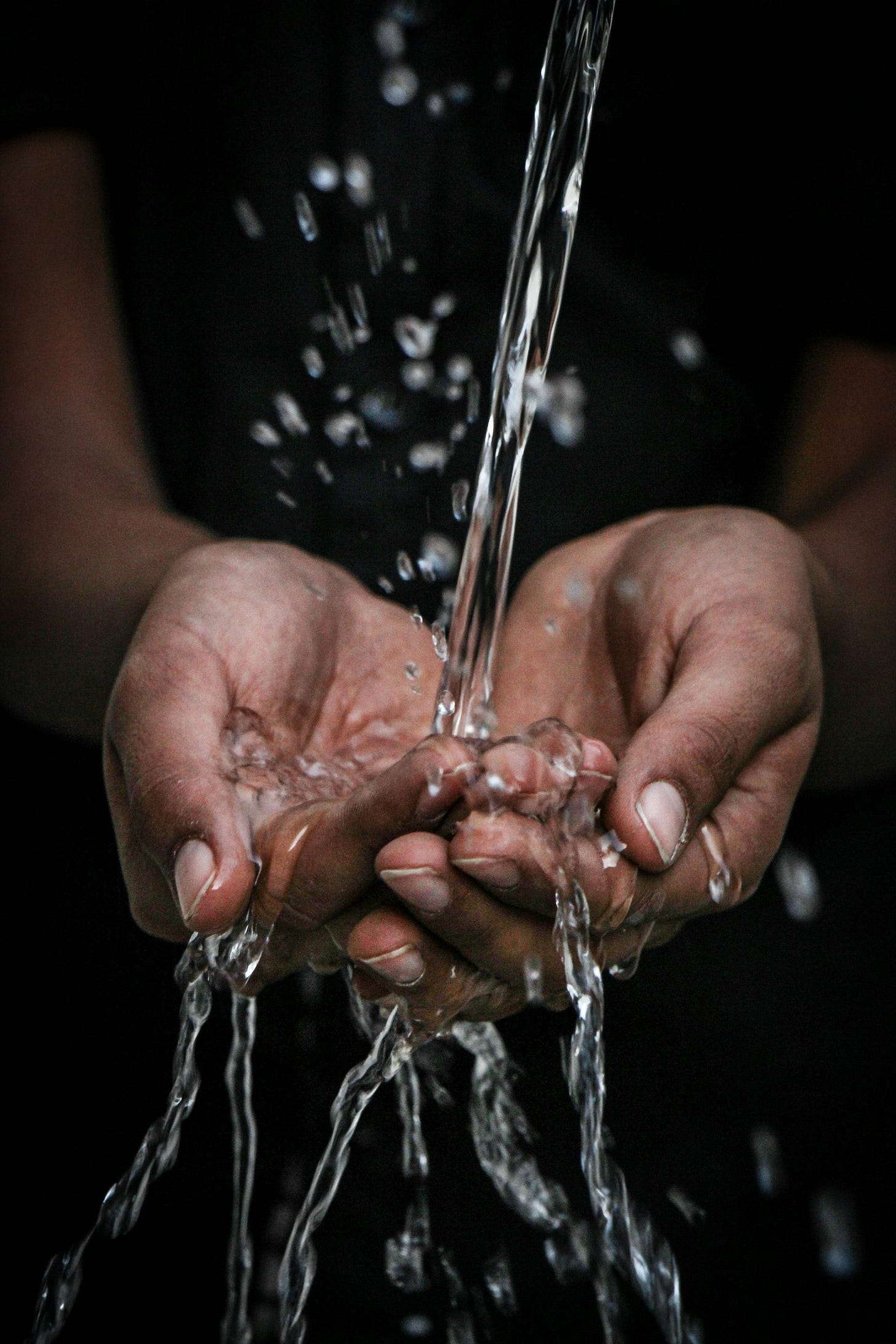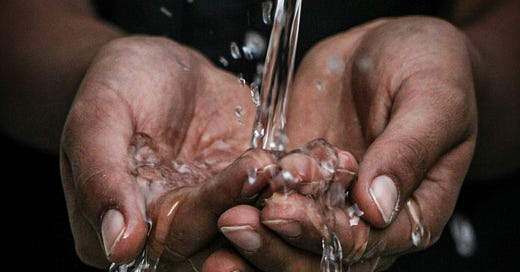Water Wars, Then and Now

From the end of 1999 to the spring of 2000, a war was raging in the South American country of Bolivia. Cochabamba city had become a mess of barricades amidst a cacophony of chanting voices raised in protest.
It was not a war of opposing political factions, nor of nations, nor of religion. Rather, it was a war fought between the citizens and the government.
It was a war fought to end the privatization of the local water supply.
Cochabamba Water War - Wikipedia
With privatization had come a sudden hike in the price rates for water use, something that worsened an already awful situation for the poorer citizens of Cochabamba city.
If you stood on the mountain overlooking Cochabamba in those days and looked from north to south, you'd see a dramatic shift in the landscape. To the north, you'd see foliage and trees among skyscrapers and wealthy suburbs. To the south, you'd see rolling hills of dry grass, adobe huts and the barest hint of green from arid plants.
Just like everywhere else, the water flowed for the wealthy while the poor were left to make do with what they found. Improvised systems funneled rainwater off of roofs and into makeshift rain barrels, and people tried to conserve as much as they could to survive between times of drought and times of plenty.
The privatization, as part of a deal with SEMAPA and Bechtel, was supposedly put forth as a means of raising funds to build better infrastructure to help combat the scarcity of water in the city. Unfortunately, it left the lower income residents facing the prospect of being fully priced out of an essential ingredient for life.
Water scarcity is a huge problem, and it has been for some time now. With the increasing destruction and pollution of natural resources due to climate change, combined with the harvesting of ground water for industrial use, there are parts of the modern world that seriously struggle just to obtain enough to meet daily needs.
Beyond the bare essential of staying hydrated, a lack of water brings disease. Without the ability to regularly wash themselves and their clothes, and the difficulty in cleaning one's home and flushing toilets, sanitation and pathogen control becomes nearly impossible in drought-stricken areas.
When people become desperate, they turn to unsafe drinking water to try and bridge the gap. Contaminated water leaves people with waterborne illnesses and even lethal poisoning. Exposure to industrial effluent and runoff can make you very seriously sick, and it can lead to long-term or even lifelong health complaints.
With all of that in mind, it should come as no surprise that people tend to react poorly when their water supply is threatened. If the threat is deemed serious enough, violence nearly always follows.
While the Bolivian people were successful in their efforts to revoke the privatization of their water, it did not solve the root cause of the issue. Further, it came at the cost of human lives- including a 17-year-old boy who was shot and killed by a soldier.
To this day, there remains a serious divide in the availability of water in Cochabamba. As before, that divide is based mostly on class.
When we talk about the potential consequences of climate change, the possibility of resource wars is often top of mind.
The idea that people might assault one another in the street over a bottle of water might seem dystopian and far-fetched to those of us in the global north, but we have to remember that we live where supplies are still plentiful.
That's going to change. In some places of North America it's already changing.
There are parts of the western United States that are struggling to support their population's needs. There's a huge swathe of the country that has gone past drought conditions and into something scarier. It's now facing aridification.
Megadrought and aridification in the southwest United States | USDA Climate Hubs
What this means is that rather than a temporary situation that will eventually be resolved, the southwestern United States is transitioning fully into a dry climate. What's worse is that it's taking place in regions that have traditionally been breadbaskets for North American agriculture.
It's not a question of waiting for the drought to end. There isn't one. This is just how that part of the country is going to be from here on out.
This kind of shift is happening everywhere. It doesn't always include aridification, of course- some regions are going in the opposite direction. My own home province has shifted its seasons by over a month, often two, and the average temperature in the summer has skyrocketed.
When I was a child, we had snow by October. Now we're lucky if we see a dusting on the ground by the end of December. More often than not we still have green grass.
Our summers have gone from cool breezes and warm sunny days to perpetual heat with high humidity. Once-in-a-season heatwaves have gone away, and now we regularly beat the average temperature of Nevada for days at a time- only we don't get the dry heat. We get air that feels like swimming out of water.
The climates are shifting around, changing weather patterns are altering growing conditions and changing where the rain falls and when. We've got a lot of adapting to do.
Water wars are not a thing that will happen in the far-off distant future, they have happened in the past and they will happen again. I'm talking full-on riots in the streets with soldiers firing live rounds. We've seen it before. It's going to become commonplace.
Sustainability initiatives to improve existing infrastructure, help prevent and combat pollution and conserve water in arid regions are desperately needed.
On an individual level, doing what you can to save water is always a good idea. Save rain water for your garden if you can, check your daily water use and see if there are ways to reduce how much you waste. There are loads of habits most of us have that can be adjusted to cut back.
45+ Ways to Conserve Water in the Home and Yard
It's also a good idea to avoid buying bottled water; the corporations who own bottling companies should not be rewarded for stealing groundwater from struggling communities.
On top of screwing people out of their needed supply of water, plastic bottles contribute to pollution and landfills which we definitely don't need.
Coca-Cola sucking wells dry in indigenous Mexican town - forcing residents to buy bottled water
Even simple measures like choosing not to mow and water your lawn can help. I know green grass looks pretty, but allowing native plants to grow instead is better for conservation. Both of biodiversity and of water.
What is xeriscaping? How you can turn your lawn into a sustainable oasis
Besides, it's really fun to research and discover the native flowers where you live. They can be absolutely gorgeous, they need minimal upkeep if they're within their own climate, and they even provide food for pollinators like bees.
You can plant them in strategic ways to create a beautiful look while being more sustainable with your landscaping, no matter where you live.
There are all kinds of ways you can save water without sacrificing the things you enjoy. You just need to be willing to do a little research and be creative.
It's better to put in a little more effort now to help stave off the worst case scenario.
Solidarity wins.


